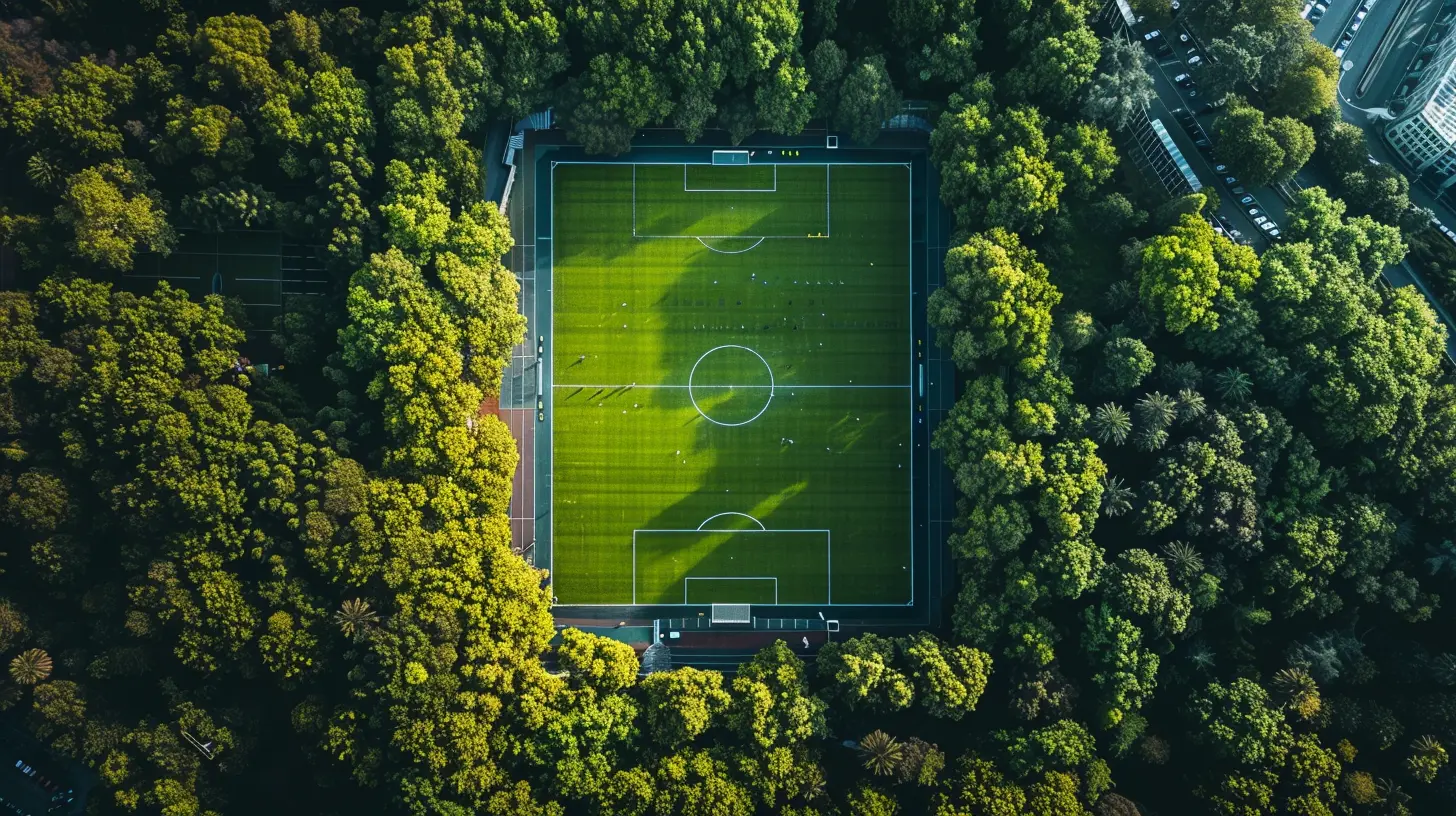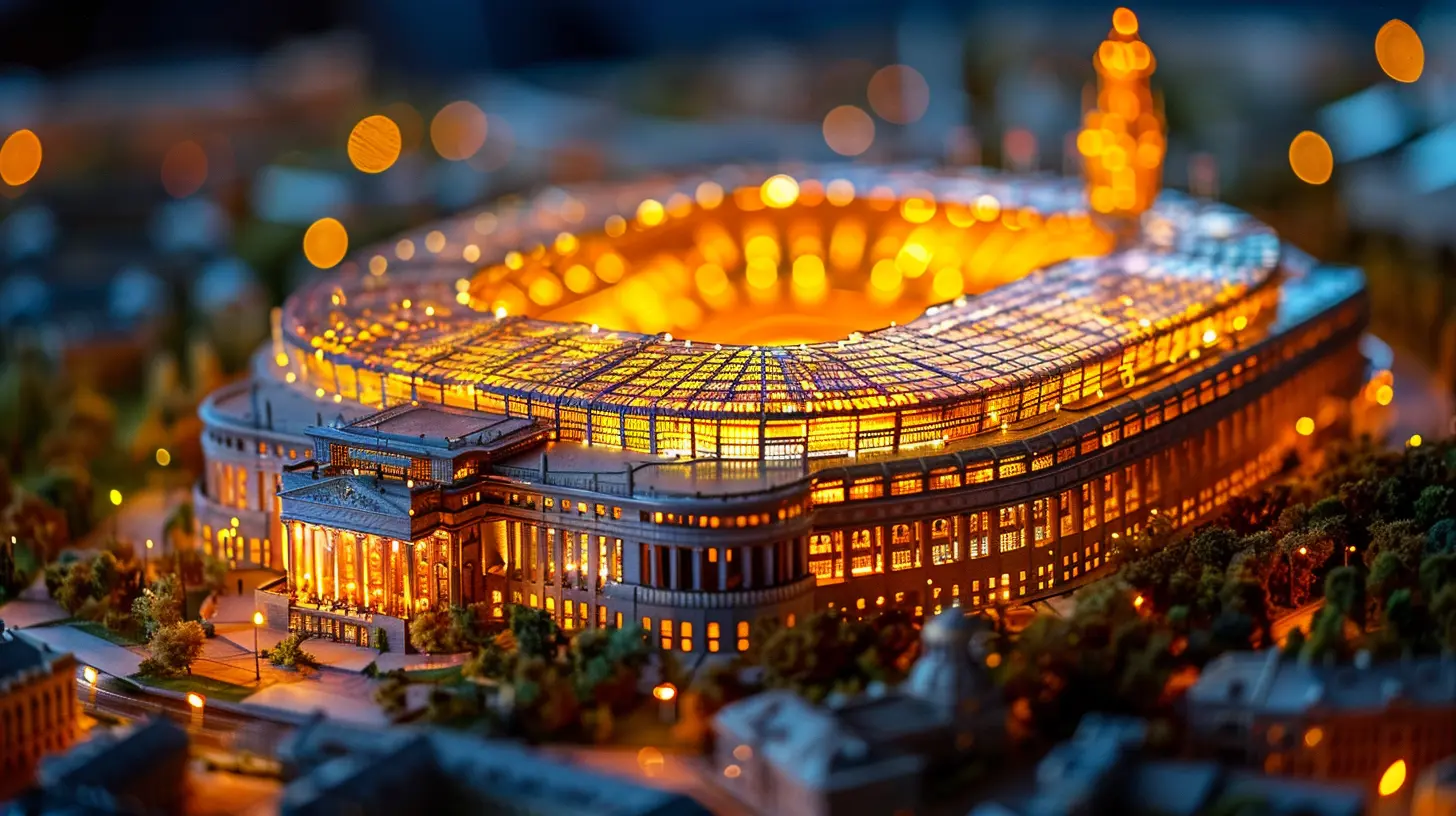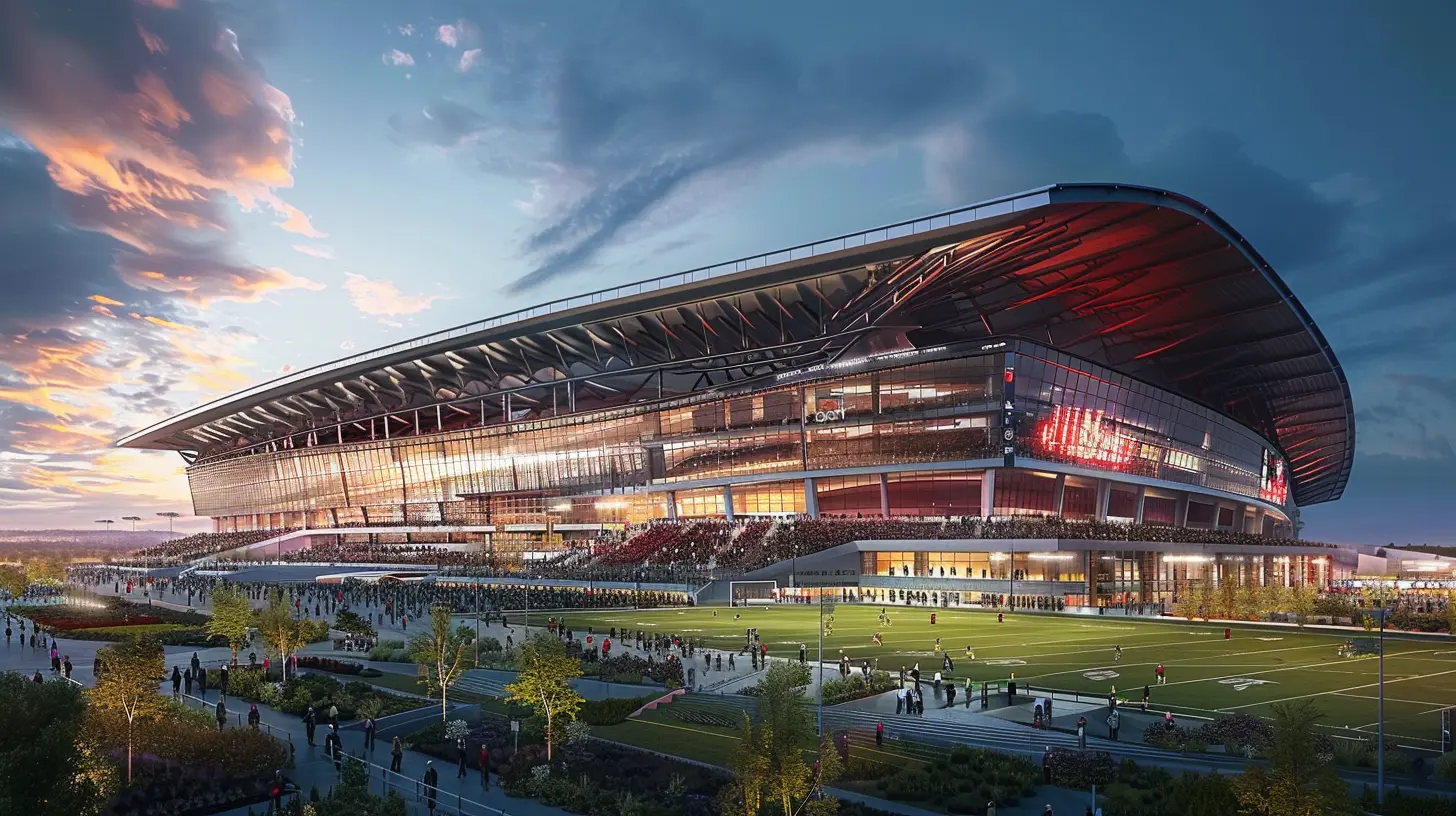The Evolution of Modern Stadium Design
30 January 2025
Stadiums have come a long way, haven't they? From the days of basic stone arenas to today's jaw-dropping architectural wonders, the evolution of modern stadium design has been nothing short of remarkable. These structures aren't just places for people to gather and watch their favorite teams play; they're now iconic symbols of progress, innovation, and even culture. But how did we get here? How did we go from crumbling coliseums to futuristic, multi-functional arenas that can house tens of thousands of fans while offering a high-tech experience?
Let’s dig into how stadiums have transformed over the years and what makes modern stadium designs so fascinating.

The Early Days: Function Over Form
The first stadiums were all about one thing: functionality. Think back to ancient Rome—the Colosseum, for instance. It was built to hold a massive crowd, but it wasn't particularly concerned with comfort or aesthetics. Sure, it was grand, but it was essentially a giant stone bowl designed for one purpose: to house gladiatorial games and other public spectacles. It wasn't about creating a pleasant environment for spectators; it was about cramming as many people as possible into a space where they could watch the action unfold.Fast forward a few centuries to the early 20th century, and stadiums were still pretty basic. Most were constructed with concrete and steel, with seating arranged in a circular or oval pattern around the playing field. They were functional, yes, but not particularly innovative in terms of design. The focus was still on capacity—how many people can we fit in here?
The Turning Point: Aesthetic Meets Functionality
The real turning point came in the mid-20th century when architects began to realize that stadiums could be more than just functional. They could be beautiful, too. This shift in thinking coincided with the rise of sports as big business. Teams wanted stadiums that not only held large crowds but also served as iconic landmarks—places that would attract tourists and serve as symbols of civic pride.One of the most notable examples of this shift is the construction of Dodger Stadium in Los Angeles in 1962. It was one of the first stadiums to focus on aesthetics as well as functionality. The stadium was built into the side of a hill, providing natural shade for fans and offering stunning views of the surrounding landscape. It was an early example of how stadiums could be designed to enhance the experience for fans, rather than simply serve as a venue for the game.

Modern Stadiums: A Fusion of Innovation and Experience
Fast forward to today, and stadium design has reached new heights. Modern stadiums are not just venues for sporting events; they’re multi-functional entertainment complexes designed to offer an immersive experience. They combine state-of-the-art technology with cutting-edge architecture to create spaces that are as much about the fan experience as they are about the game itself.Technology: A Game-Changer in Design
When you think about modern stadiums, one of the first things that comes to mind is technology. Today's stadiums are packed with high-tech innovations designed to enhance the fan experience. From massive video screens to advanced sound systems, technology has become an integral part of stadium design.Take, for example, the Mercedes-Benz Stadium in Atlanta, Georgia. This futuristic venue, which opened in 2017, features a retractable roof that can open or close in just seven minutes. Its "halo board"—a 360-degree, 63,000-square-foot LED screen—provides fans with crystal-clear replays and live game coverage. This level of technological integration was unheard of just a few decades ago, but today it’s becoming the norm.
And it’s not just about the game. Modern stadiums are designed to keep fans entertained from the moment they walk through the gates to the final whistle. Many feature interactive exhibits, virtual reality experiences, and even mobile apps that allow fans to order food and drinks from their seats. It’s all about creating an environment where fans feel like they’re part of the action, even when they’re sitting hundreds of feet from the field.
Sustainability: The Green Revolution
Another big trend in modern stadium design is sustainability. As concerns about climate change and environmental impact grow, many stadiums are being designed with sustainability in mind. From energy-efficient lighting to rainwater recycling systems, modern stadiums are doing their part to reduce their carbon footprint.The LEED (Leadership in Energy and Environmental Design) certification has become a badge of honor for many stadiums. This certification recognizes buildings that meet certain environmental standards, and more and more stadiums are aiming for it. Take the Levi's Stadium in Santa Clara, California, for example. It was the first NFL stadium to receive a LEED Gold certification. The stadium features solar panels, a green roof, and a water recycling system that reduces the amount of water used to maintain the field.
Multi-Functionality: More Than Just Sports
Modern stadiums aren’t just for sports anymore. They’ve evolved into multi-purpose entertainment hubs that can host concerts, conventions, and even community events. The idea is to make stadiums more versatile so that they can be used year-round, not just during the sports season.A great example of this is the Tottenham Hotspur Stadium in London. Opened in 2019, this stadium was specifically designed to host not only soccer matches but also NFL games, concerts, and other events. It features a retractable pitch that can be switched out depending on the event, allowing the stadium to cater to a wide range of audiences. This level of versatility is becoming increasingly important as teams and cities look to maximize the return on their investment.

Fan Experience: Putting Spectators First
Let’s be honest: attending a live event should be about more than just watching the game. It should be an experience—a memory you'll take with you long after the final score is tallied. Modern stadiums are all about creating that experience, and that’s where fan-centric design comes into play.Seating Comfort and Sightlines
Gone are the days when fans had to endure hard, uncomfortable seats with poor views of the field. Today’s stadiums are designed with fan comfort in mind. That means wider seats, more legroom, and better sightlines. Architects are paying closer attention to how fans interact with the space, ensuring that every seat in the house offers a great view of the action.Take the SoFi Stadium in Los Angeles, for example. Opened in 2020, this state-of-the-art venue features seats that are angled towards the field, ensuring that fans have a clear view of the action no matter where they’re sitting. The stadium also features "open corners," which allow fans to see the field even when they're walking around or grabbing food from the concession stands.
VIP and Premium Experiences
Another big trend in modern stadium design is the focus on VIP and premium experiences. Many stadiums now offer luxurious suites, exclusive clubs, and even field-level seating for fans willing to pay a premium for a more personalized experience.For instance, Allegiant Stadium in Las Vegas offers a variety of premium seating options, including field suites that put fans right next to the action. These suites come with private entrances, gourmet food and drink options, and even personal attendants. It's all part of the push to create a more immersive, high-end experience for fans who are willing to shell out a little extra.

Iconic Architecture: Stadiums as Landmarks
Finally, we can’t talk about modern stadiums without mentioning their architecture. Today’s stadiums are designed to be more than just functional—they’re meant to be iconic. Many of them have become landmarks in their own right, with designs that reflect the culture and identity of the cities they call home.Look at the Bird’s Nest in Beijing, for example. Built for the 2008 Olympics, this stadium is as much a piece of art as it is a venue for sporting events. Its unique design, which resembles a bird’s nest, has made it one of the most recognizable stadiums in the world. Similarly, the Allianz Arena in Munich is known for its distinctive “inflatable” exterior, which can change colors depending on the team that’s playing inside.
In today’s world, a stadium is often the first thing people think of when they picture a city. It’s no longer just a place to watch a game—it’s a symbol of civic pride and a representation of the city’s values and culture.
The Future of Stadium Design: What’s Next?
So, where do we go from here? If the past is any indication, the future of stadium design is likely to be even more innovative and fan-focused. We’re already seeing the integration of virtual and augmented reality into the fan experience, and it’s only a matter of time before these technologies become a regular part of stadium design.We might also see more emphasis on sustainability, with stadiums becoming entirely self-sufficient in terms of energy and water use. And as cities continue to grow and evolve, stadiums will likely become even more integrated into the urban landscape, serving not just as venues for sports and entertainment but as community hubs where people can gather, relax, and socialize.
In short, the evolution of modern stadium design is far from over. If anything, we’re just getting started.
all images in this post were generated using AI tools
Category:
StadiumsAuthor:

Umberto Flores
Discussion
rate this article
21 comments
Zaid Jennings
Stadiums now blend functionality with fan experience beautifully.
April 8, 2025 at 12:56 PM

Umberto Flores
Thank you! It's fascinating to see how modern stadiums prioritize both performance and fan enjoyment, enhancing the overall experience for everyone involved.
Thistle Jenkins
In steel and glass, dreams take flight, Echoes of history blend with the bright, Modern arenas, where passion ignites, Uniting our hearts in thrilling nights.
February 13, 2025 at 12:44 PM

Umberto Flores
Thank you! I'm glad you captured the essence of modern stadiums as vibrant spaces where history and passion converge.
William Chavez
Fantastic read! It's fascinating to see how modern stadium design has transformed the fan experience. Each innovation truly enhances our connection to the game. Looking forward to more insights on this topic!
February 9, 2025 at 1:28 PM

Umberto Flores
Thank you for your kind words! I'm glad you enjoyed the read and found the topic engaging. Stay tuned for more insights!
Mae McRae
Stadiums: Style over substance!
February 9, 2025 at 4:53 AM

Umberto Flores
While style is important, modern stadium design increasingly emphasizes functionality, sustainability, and fan experience, reflecting a balance between aesthetics and practical needs.
Georgina Clark
Great insights on the evolution of stadium design! It's fascinating to see how innovation in architecture and technology enhances the fan experience while prioritizing sustainability and community engagement. Excited for future developments!
February 7, 2025 at 12:49 PM

Umberto Flores
Thank you for your kind words! I’m glad you found the insights engaging. The future of stadium design indeed looks promising with innovation in sustainability and community focus.
Finley Barron
Form meets function beautifully!
February 6, 2025 at 9:12 PM

Umberto Flores
Thank you! I'm glad you appreciate the balance between aesthetics and functionality in modern stadium design.
Mercy McPherson
What an exciting journey through the world of stadium design! From vibrant fan experiences to innovative architecture, it’s inspiring to see how these spaces enhance our love for sports. Let’s celebrate this evolution! 🎉🏟️
February 6, 2025 at 12:23 PM

Umberto Flores
Thank you! I'm glad you enjoyed the journey—stadium design truly transforms our sports experiences! 🎉🏟️
Denise Bass
Modern stadiums prioritize fan experience, yet often overlook community integration and sustainability.
February 5, 2025 at 3:23 AM

Umberto Flores
You're right; while fan experience is crucial, integrating community needs and sustainability should be equally prioritized in modern stadium design for a holistic approach.
Harrison Hubbard
Modern stadium design has transformed significantly, integrating advanced technology, sustainability, and fan experience. From retractable roofs to eco-friendly materials, these innovations enhance accessibility and engagement, reflecting evolving societal values in sports.
February 4, 2025 at 7:58 PM

Umberto Flores
Thank you for your insightful comment! Indeed, the integration of technology and sustainability in stadium design not only enhances the fan experience but also aligns with contemporary values in sports and community engagement.
Zephyros Campbell
Stadiums are more than just structures; they are the heartbeats of communities, where dreams ignite and legends are born. Let's celebrate the creativity and passion driving modern design!
February 4, 2025 at 1:06 PM

Umberto Flores
Thank you for highlighting the significance of stadiums! They truly embody the spirit of community and innovation in modern design. Let's continue to celebrate their impact!
Uzi Barrett
Modern stadiums are more than just arenas; they are architectural marvels that redefine the fan experience. As technology and design evolve, they unite communities, elevate sporting spirit, and create unforgettable memories for generations to come!
February 3, 2025 at 12:27 PM

Umberto Flores
Thank you for highlighting the profound impact of modern stadiums! Their architectural innovation indeed transforms the fan experience and fosters community connections.
Sonya Mullen
The evolution of stadium design reflects shifting fan experiences and technological advancements, balancing aesthetics, functionality, and community engagement in modern sports.
February 3, 2025 at 4:09 AM

Umberto Flores
Thank you! I appreciate your insights on how modern stadium design successfully integrates fan experiences, technology, and community impact. Your perspective highlights the multifaceted nature of this evolution.
Thea Ward
Great insights on the evolution of stadium design! It's fascinating to see how architecture enhances the fan experience and reflects cultural shifts. Excited to see what the future holds!
February 2, 2025 at 1:18 PM

Umberto Flores
Thank you! I'm glad you found it insightful. The future of stadium design is indeed exciting!
Fenris Coleman
Exciting innovations redefine fan experience! Great read!
February 2, 2025 at 4:48 AM

Umberto Flores
Thank you! I’m glad you enjoyed the article and share the excitement about how innovations are transforming the fan experience!
Reina Roberson
From mere brick and mortar to architectural marvels, modern stadiums blend aesthetics with fan experience. These venues are no longer just for games; they’re immersive ecosystems, redefining how we celebrate sports and community. Evolution never looked so good!
February 1, 2025 at 8:05 PM

Umberto Flores
Thank you for your insightful comment! Modern stadiums truly are transformative spaces that enhance both the fan experience and community engagement. I'm glad you enjoyed the article!
Charlie McMahan
Modern stadiums aren't just venues; they reflect innovation, community spirit, and a love for the game. Let's celebrate the creativity that transforms how we experience sports together!
February 1, 2025 at 12:03 PM

Umberto Flores
Absolutely! Modern stadiums are remarkable spaces that embody both creativity and community, enhancing our connection to the game and each other. Let's continue to embrace this evolution in design!
Hudson Cantu
Revolutionizing experiences, stadiums elevate sports to greatness!
February 1, 2025 at 5:33 AM

Umberto Flores
Thank you! Indeed, modern stadium design transforms how fans engage with sports, enhancing both the experience and the atmosphere.
Foster Martinez
From quirky quirks to sleek innovations, modern stadiums are a game-changer! Excited to see how these architectural wonders transform our sports experiences. Let’s cheer for design that inspires!
January 31, 2025 at 8:40 PM

Umberto Flores
Absolutely! Modern stadiums truly blend functionality with creativity, enhancing our overall sports experience and inspiring fans. Exciting times ahead!
Camden Sanchez
Modern stadiums are more than mere structures; they whisper secrets of history and innovation, blending artistry with sport in a captivating dance of design.
January 31, 2025 at 11:20 AM

Umberto Flores
Thank you! Indeed, modern stadiums reflect our cultural evolution, merging functionality with artistic expression, making them iconic landmarks in their own right.
Bailey Webster
Stadiums: Where dreams soar!
January 31, 2025 at 5:40 AM

Umberto Flores
Absolutely! Stadiums not only host events but also inspire hope and unity, symbolizing the aspirations of fans and athletes alike.
Wyatt Long
This article beautifully captures the transformation of stadium design, reflecting both technological advancements and shifts in fan experience. It's fascinating to see how modern venues prioritize sustainability and inclusivity, creating spaces that foster community engagement. I appreciate the thoughtful perspective on how architecture can enhance the overall sporting experience.
January 30, 2025 at 1:37 PM

Umberto Flores
Thank you for your thoughtful feedback! I'm glad you appreciated the focus on sustainability and inclusivity in modern stadium design.
MORE POSTS

Mental Toughness: How to Handle Pressure in Golf

The Science of Turf: Natural Grass vs. Synthetic Fields in Stadiums

Recovering from Injuries: Golf-Specific Rehabilitation Exercises

The Battle on Clay: Djokovic vs. Nadal in Tennis

Game Management: How Referees Keep Control Without Being Overbearing

Using Machine Learning to Predict Sports Outcomes and Enhance Strategy

How to Train for a 12-Round Fight: Building Stamina and Strength

Boxing and Cross-Training: How Other Sports Can Improve Your Game

How Expansion Teams Have Shaped the NHL Landscape

Improving Your Focus Through Pre-Shot Routines

How Smart Rackets Are Helping Players Perfect Their Game

How to Conquer the Mental Grind of a Five-Set Tennis Match

Officiating in Youth Sports: Why Its More Than Just Blowing a Whistle